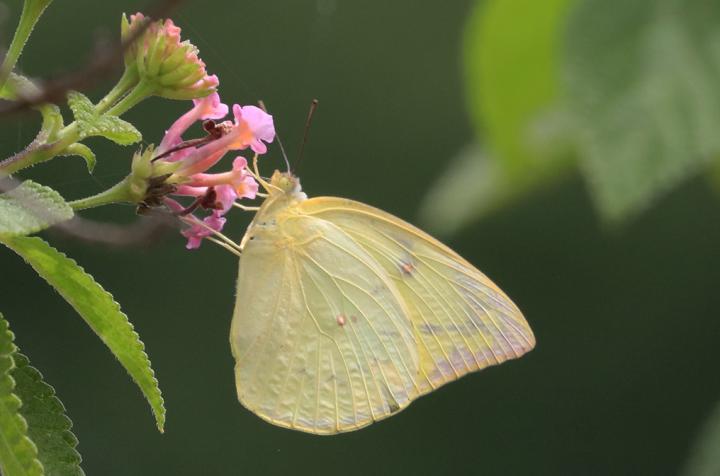
Credit: Krushnamegh Kunte
Butterflies show several different types of movement. They can seasonally migrate long distances over hundreds of kilometres. Alternatively, butterflies also disperse over relatively short distances for feeding and breeding over several hours or days.
Migration and dispersal are vastly different activities with very different benefits and risks. NCBS Grad student Vaishali Bhaumik and her advisor Dr Krushnamegh Kunte decided to investigate the effects of such activities on the morphology (form and structure) and reproduction of butterflies.
To answer this research question Vaishali and her advisor decided to do field studies on several different butterfly species that displayed different dispersal and migration patterns.
The butterflies studied were: (Photos Below)
- Two species of Catopsilia butterflies, which have dispersing and non dispersing populations. (C. pomona and C. pyranthe)
- Five close relatives of the above butterflies which do not disperse
- Two milkweed butterflies that migrate long distances and reproduce only after migration
In all the butterflies Vaishali and Kunte measured the relative investment into their flight muscles (flight morphology) and abdomen (reproductive tissue), as well as how many ova they kept in their body relative to their weight (egg load).
This was done using various tools and methods such as comparing the weight of different segments of their body and counting the number of ova inside of females. The results were very interesting.
The results indicated that the females of migrating milkweed butterflies undergo reproductive diapause. This means their reproductive system stops producing ova (eggs) and makes their abdomen lighter to ensure more efficient long-distance migration. This finding was in accordance with previous findings of the lab when they studied the same group.
Their results on the non-migrating butterflies (Catopsilia species) pointed towards some remarkable conclusions. Like the milkweed butterflies, the females have a much larger investment in the abdomen than males. This is because the females invest a lot of energy in reproductive tissue which makes the ova. This puts them at a disadvantage while flying by making their abdomen relatively heavier, thus requiring higher energy expenditure during flight.
The results further indicated that despite being non-migrating, the females could regulate the number of eggs in their abdomen in response to the type of movement.
Dispersing females of Catopsilia butterflies have a higher egg load than non-dispersing ones, but among dispersers, the number of ova declines rapidly as the relative size of their thorax increases.
The increase in the size of their thorax ensures that the flight muscles of the butterflies are stronger. Vaishali and Krushnamegh think that could be an adaptive response of the butterflies because they received less food as a larvae. In simple terms, when there is less food around you it makes sense to have the strength to fly longer distances to search for food and thus the give preferential investment of energy for a larger thorax (i.e. bigger flight muscles) rather than the abdomen (making eggs).
So why do the non-migrating Catopsilia butterflies have lower egg loads? Krushnamegh and Vaishali suggest that butterflies that do not disperse and stay in the same place can lay eggs frequently but in smaller batches. This keeps their bodies light and ensures efficiency during flight.
To look at the greater picture, Catopsilia butterflies are reproductively active even while dispersing, and the females carry batches of eggs as they disperse. Dispersal allows them to move from one habitat to another even if the habitats are fragmented.
However, unlike the milkweed butterflies, the Catopsilia butterflies cannot pause their reproductive activity to ensure that they can fly very long distances. With habitat loss and fragmentation becoming an ongoing global crisis, female Catopsilia butterflies carrying eggs are put under greater and greater stress. Vaishali and Krushnamegh point out that this would adversely affect the whole species as these butterflies fly over larger distances to habitats which get poorer and poorer every day.
###
Media Contact
Krushnamegh Kunte
[email protected]




